From June 14 to July 5, HUST-NTU Academic Lecture Series was successfully held in the School of Chemistry and Chemical Engineering, HUST. At the invitation of Prof. Xia Baoyu and Prof. Yang Liming of the School of Chemistry and Chemical Engineering HUST, Prof. Wang Xin and Assoc Prof. Liu Bing of School of Chemical and Biomedical Engineering NTU, Prof. Yan Qingyu and Assoc Prof. Liu Zheng of School of Materials Science and Engineering NTU gave invited lectures. More than 400 students and researchers from universities such as Huazhong University of Science and Technology, Nankai University and other domestic universities participated online.
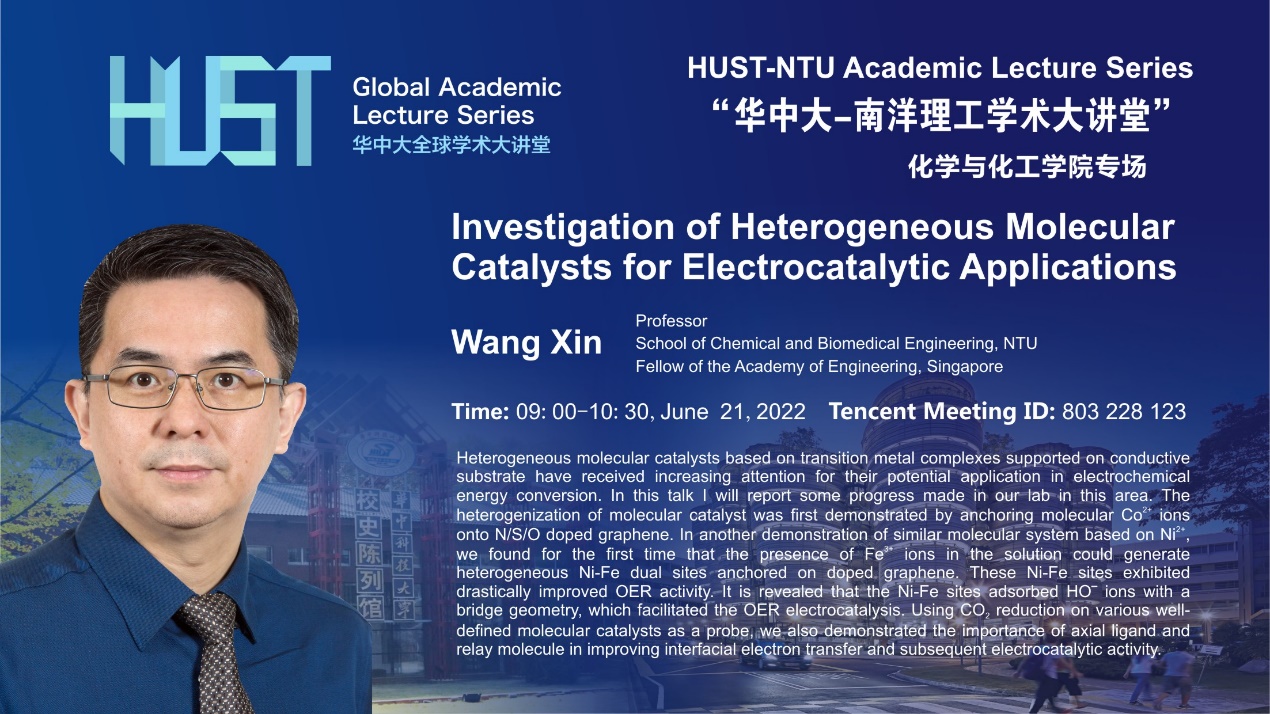
Photo | Prof. Wang Xin giving a lecture entitled “Investigation of heterogeneous molecular catalysts for electrocatalytic applications”
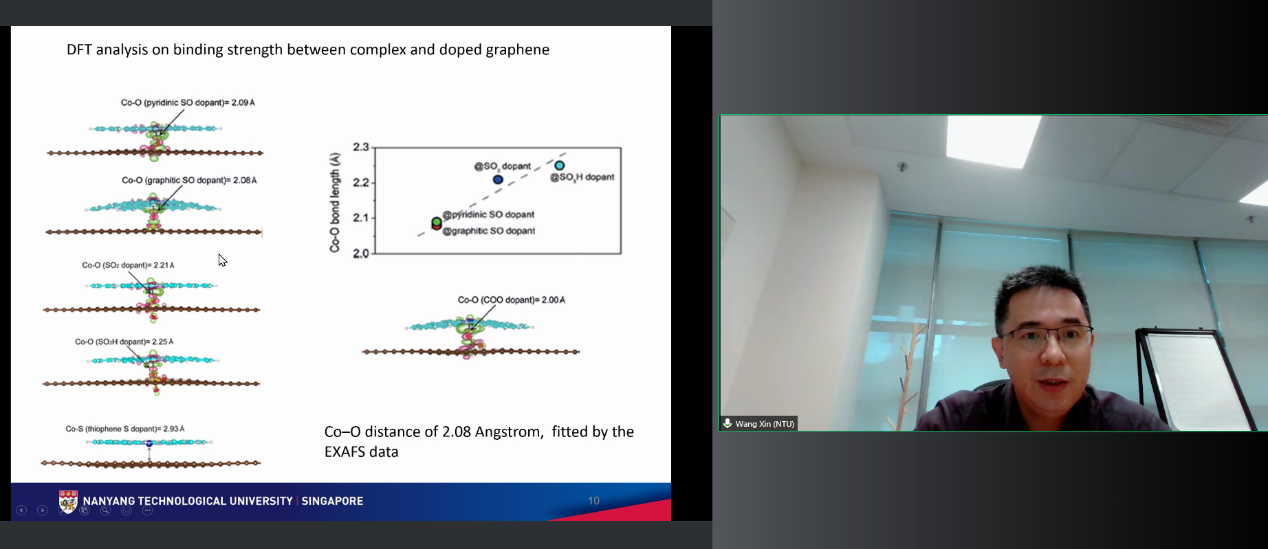
Photo | Prof. Wang Xin introducing DFT analysis on binding strength between complex and doped graphene
In this lecture, Prof. Wang Xin introduced that heterogeneous molecular catalysts based on transition metal complexes supported on conductive substrate have received increasing attention for their potential application in electrochemical energy conversion. He reported some progress made in his lab in this area. The heterogenization of molecular catalyst was first demonstrated by anchoring molecular Co2+ ions onto N/S/O doped graphene. In another demonstration of similar molecular system based on Ni2+, he found for the first time that the presence of Fe3+ ions in the solution could generate heterogeneous Ni-Fe dual sites anchored on doped graphene. These Ni-Fe sites exhibited drastically improved OER activity. It is revealed that the Ni-Fe sites adsorbed HO- ions with a bridge geometry, which facilitated the OER electrocatalysis. Using CO2 reduction on various well-defined molecular catalysts as a probe, he also demonstrated the importance of axial ligand and relay molecule in improving interfacial electron transfer and subsequent electrocatalytic activity.
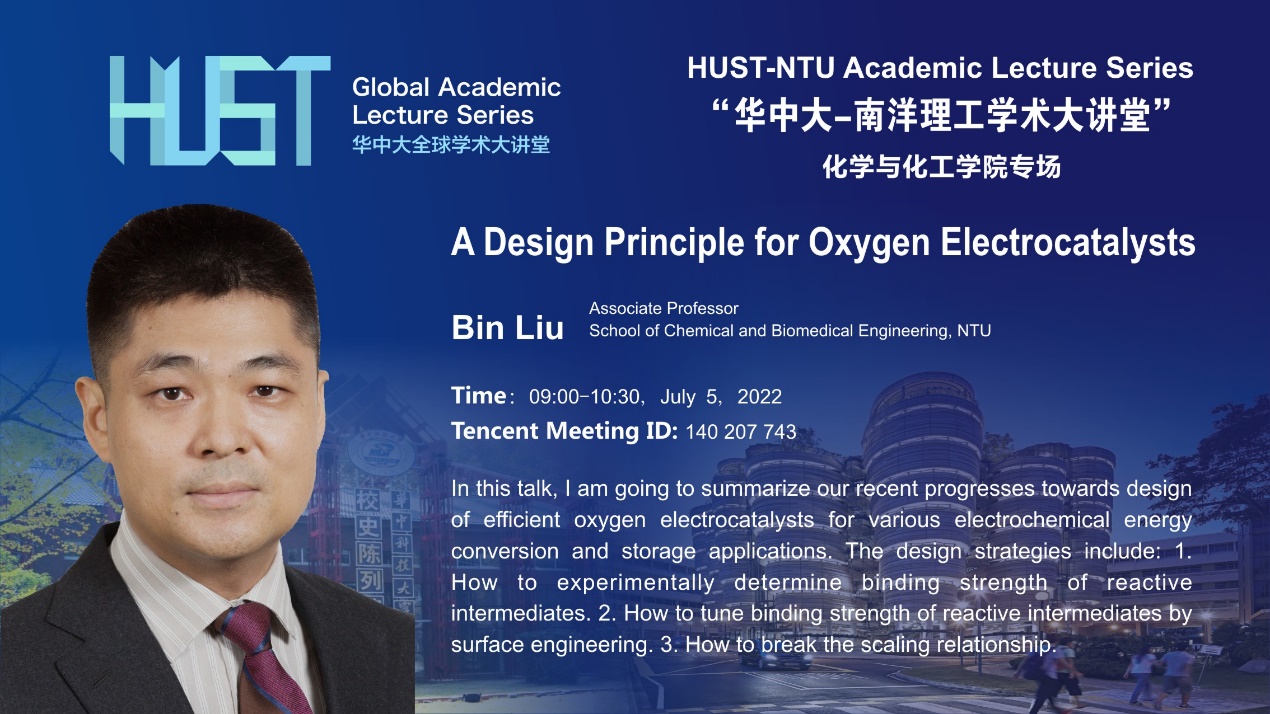
Photo | Assoc Prof. Liu Bin giving a lecture entitled “A Design Principle for Oxygen Electrocatalysts”
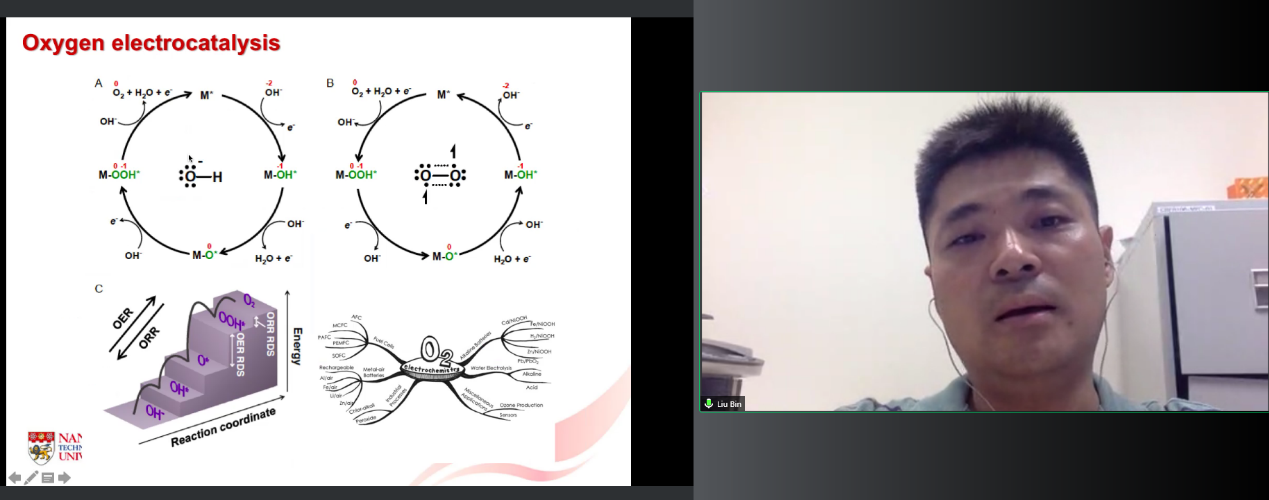
Photo | Assoc Prof. Liu Bin introducing oxygen electrocatalysis
Assoc Prof. Liu Bin summarized his recent progresses towards design of efficient oxygen electrocatalysts for various electrochemical energy conversion and storage applications. The design strategies include: 1. How to experimentally determine binding strength of reactive intermediates. 2. How to tune binding strength of reactive intermediates by surface engineering. 3. How to break the scaling relationship.

Photo | Prof. Yan Qingyu giving a lecture entitled “Electrocatalytic nitrogen fixation”
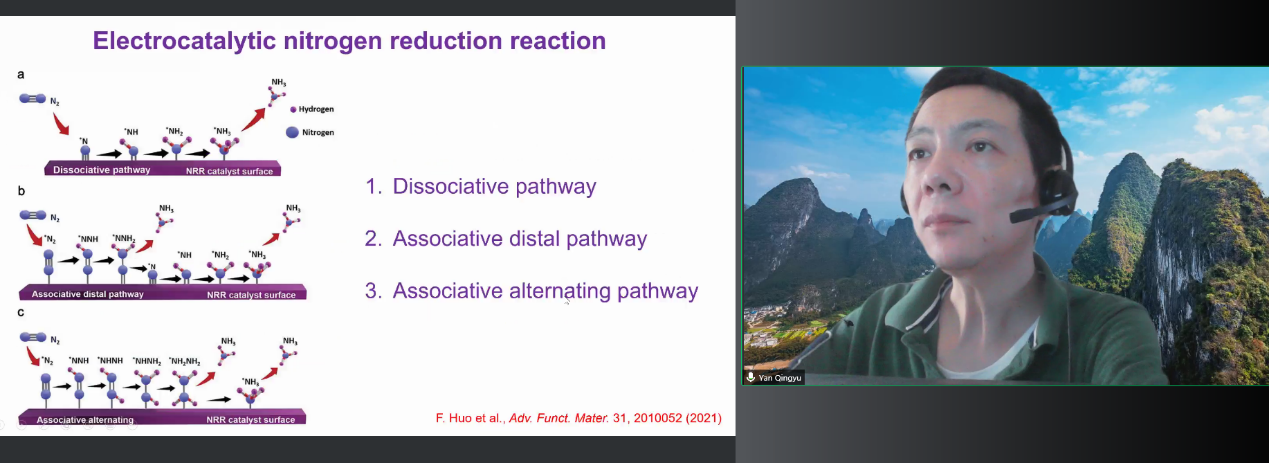
Photo | Prof. Yan Qingyu introducing electrocatalytic nitrogen reduction reaction
The industrial synthesis of ammonia (NH3), a key feedstock for synthetic fertilizer, is relying on traditional Haber-Bosch approach under extremely harsh conditions (100-200 bar and 400-500℃. Nitrogen fixation via electrocatalytic process provides an intriguing route at ambient conditions, potentially realizing a sustainable approach when driven by renewable electricity (wind power, hydroelectric power, etc.). In this presentation, Prof. Yan Qingyu discussed their recent works on the electrocatalytic processes of nitrogen oxidation, nitrogen reduction, and urea synthesis, and the role of new catalyst design and analysis of the reaction pathway.
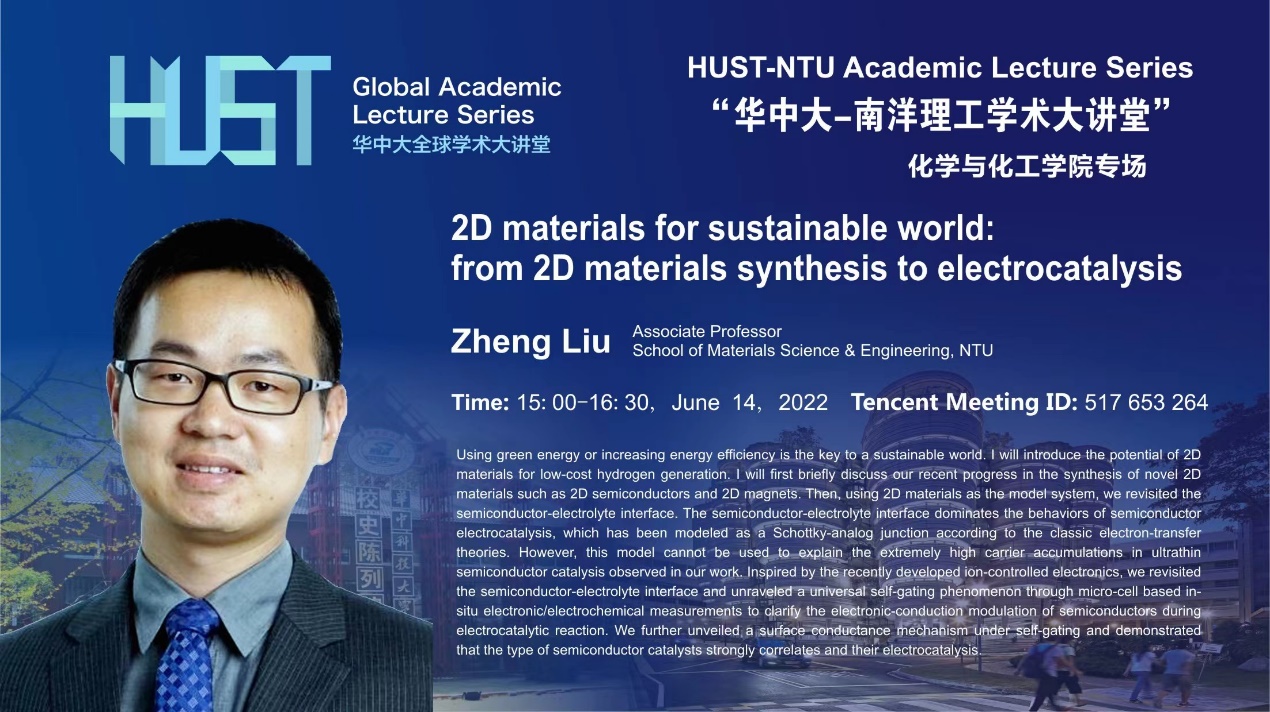
Photo | Assoc. Prof. Liu Zheng giving a lecture entitled “2D materials for sustainable world: from 2D materials synthesis to electrocatalysis”
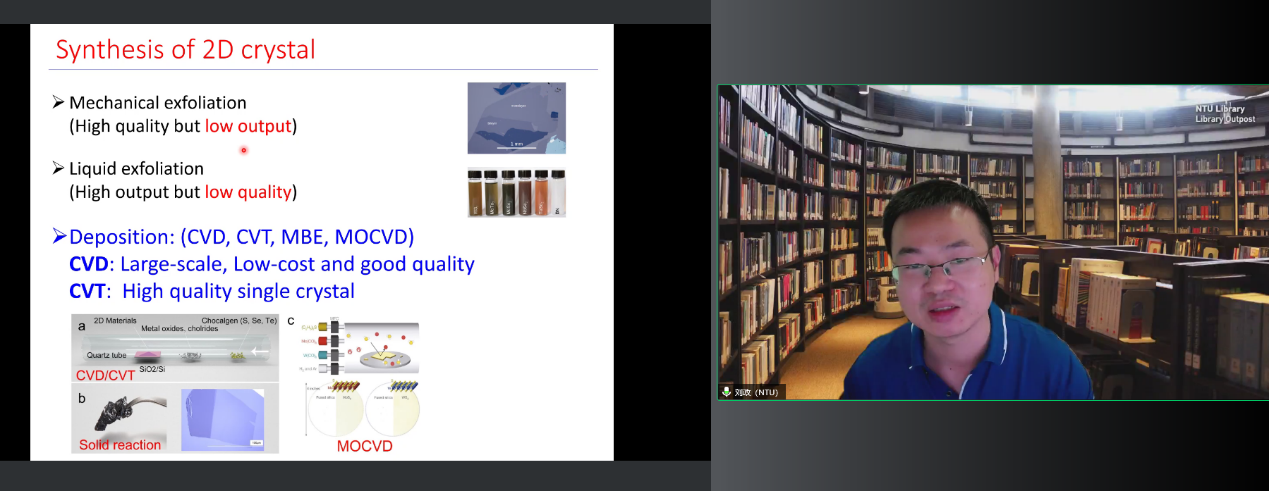
Photo | Assoc. Prof. Liu Zheng introducing synthesis of 2D crystal
In this lecture, Prof. Liu Zheng first introduced the difference between ordinary materials and two-dimensional materials, then he explained his research in the synthesis of 2D materials and electrocatalytic mechanism in detail, including the synthesis methods of 2D materials, and key elements of 2D TMDS synthesis. In addition, Prof. Liu introduced his analysis of the mechanism of electrocatalysis using a simple two-dimensional material model, which can be used to design semiconductor catalysts more electrically and to improve the charge transport mechanism in semiconductor electrochemistry. In the end, Prof. Liu Zheng mentioned the combination of material synthesis and machine learning, which can be used to synthesize 2D materials accurately through smart synthesis and smart analysis.
During the Q&A part, Prof. Wang Xin, Assoc Prof. Liu Bing, Prof. Yan Qingyu and Assoc Prof. Liu Zheng exchanged ideas with the participants, and had a heated discussion on hot research issues, providing ideas and guidance to researchers and students in related research fields.
About Speakers
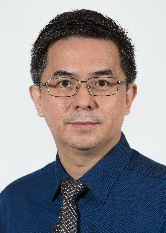
Prof. Wang Xin is Cheng Tsang Man Chair Professor in Energy and Chair of School of Chemical and Biomedical Engineering at Nanyang Technological University. He received his Bachelor’s (1994) and Master’s (1997) degrees in Chemical Engineering from Zhejiang University, and Ph. D (2002) in Chemical Engineering from Hong Kong University of Science and Technology. From 2003 to 2005, he worked as a research fellow at University of California, Riverside, and concurrently, as R&D director for a startup fuel cell company. He joined Nanyang Technological University, Singapore as an assistant professor in 2005 and was promoted to associate professor with tenure in 2010 and full professor in 2016. He has research interest in nanostructure control, surface functionalization and interface tuning for selective electrocatalysis towards key electrochemical reactions for energy and environmental applications. He serves as an associate editor for Carbon Energy (Wiley). He is a Fellow of the Academy of Engineering, Singapore, a Fellow of Royal Society of Chemistry (UK) and has been a Clarivate Analytics Highly Cited Researcher since 2018. He is the winner of Mitsui Chemicals-SNIC Industry Award in Materials and Nano-Chemistry 2021 and Nanyang Research award 2021.
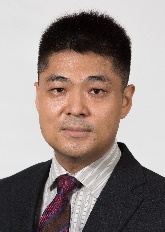
Assoc. Prof. Liu Bin received his bachelor (1st Class Honors) and master degrees at the National University of Singapore, Singapore in 2002 and 2004, respectively, and completed his doctoral degree under Prof. Eray S. Aydil at University of Minnesota, USA in 2011. After spending a year as postdoctoral fellow in University of California Berkeley, USA with Prof. Yang Peidong, he joined School of Chemical and Biomedical Engineering at Nanyang Technological University (NTU) as an Assistant Professor in June 2012 and was promoted to Associate Professor in March 2017. His research focuses on photo(electro)catalysis and in-situ/operando characterization. Professor Liu has published more than 200 papers, among which, over 50 papers appeared in Nature Energy, Nature Catalysis, Nature Communications, Science Advances, Chemical Reviews, Chemical Society Reviews, Joule, Chem, Journal of the American Chemical Society, Angewandte Chemie International Edition, Advanced Materials, and Energy and Environmental Science. As at June 2022, his research has been cited over 27,000 times with an h-index of 79 (Google Scholar). He was awarded emerging investigator by Journal of Materials Chemistry A, Royal Society of Chemistry in 2016 and class of influential researchers by Industrial & Engineering Chemistry Research, American Chemical Society in 2018. He was listed in the “Highly Cited Researchers” in Cross-Field in 2019 and Chemistry in 2020-2021 by Clarivate. He is currently the associate editor in Catalysis Science & Technology.

Dr. Yan obtained his BA from Materials Science and Engineering Department of Nanjing University, China, in 1999. He finished his Phd from Materials Science and Engineering Department of State University of New York at Stony Brook in 2004. After that, He joined the Materials Science and Engineering Department of Rensselaer Polytechnic Institute as a postdoctoral research associate until joining Nanyang Technological University in 2007. Now he is a full professor of School of Materials Science & Engineering, Nanyang Technological University. His research interests are 1) advanced battery technology, 2) new battery materials development, 3) thermoelectric semiconductors, 4) nanocrystals synthesis and integration.
|
|
|
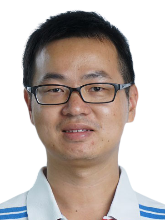 |
Liu Zheng is an associate professor of School of Materials Science & Engineering at Nanyang Technological University, Singapore. He works on the synthesis of high-quality and large-size novel 2D monolayers, especially transition metal dichalcogenides (TMDs) and their applications in catalysis and electronics. He has published > 300 papers with total citations > 40,000 and H-index of 98. He was the finalist in the World Technology Award in Energy category in 2012. In 2013, he was awarded the prestigious Singapore NRF Fellowship and the elite Nanyang Assistant Professorship. He was awarded ICON-2DMAT Young Scientist Award and the prestigious Singapore Young Scientist Award in 2018. He was named Materials Research Society of Singapore Chair Professorship in 2019 and awarded Asia's Rising Scientists and the Nanyang Research Award (Young Investigator) in the same year.